Section Quicklinks
Organizational planning is a process through which a nonprofit defines and sets short- and long-term goals, priorities and the strategies and activities it will employ to fulfill its mission. A holistic plan includes strategies for building organizational capacity and sustaining or growing programs and resources, including board and staff members. Planning focuses stakeholders around the mission. Planning is ongoing rather than occasional and requires input from a diverse cross-section of stakeholders to assure the organization’s programs continue to meet the needs of its communities and constituencies. Planning is the most central aspect of nonprofit management and leadership for nonprofit board and staff members alike, and is central to sound decision-making.
KEY
- Legal Practices are legally required of all Montana nonprofits
- Essential Practices are widely recognized as industry standards and generally expected of all nonprofits
- Recommended Practices should be considered by all nonprofits, with implementation dependent on capacity and life stage
Practices
- ★★ Originally defined by its founders or its initial board of directors, a nonprofit’s vision, mission, and value statements are regularly reviewed by the board of directors, taking into consideration societal and community changes. This review determines whether these statements are still relevant or should be amended to address evolving needs of its target constituents and the communities at large.
- ★★ For a nonprofit organization to have a coherent and consistent set of programs, the board of directors and the staff are able to articulate a shared vision and mission for the organization that guides the establishment of its goals and objectives and the selection of strategies for obtaining them.
- ★★ For organizational planning to be effective and to remain responsive and relevant to community needs, a nonprofit must seek and incorporate input from a variety of sources, such as staff, the board of directors, donors, constituents, and a diverse cross-section of stakeholders, including those traditionally marginalized.
- ★ Organizational planning is intentional and ongoing, with clear metrics and measurable outcomes that reflect the organization’s mission and allow continuous learning and improvement.
- ★ A nonprofit conducts periodic evaluations of the effectiveness and impacts of the services it is providing, extracts lessons from those evaluations, and uses them to plan, direct, and strengthen future deployments of nonprofit and community resources. A nonprofit may consult with counterparts in its field to devise its evaluation.
- ★ A nonprofit develops and adopts a comprehensive plan that drives everything the organization does—programmatic activities, operations, financial management, fund development, communications, and risk and crisis management.
- The plan incorporates information obtained through an assessment of community needs, the organization’s strengths and resources available to meet those needs, and the challenges it faces in pursuing its mission.
- The plan includes clearly defined goals, objectives, and expected outcomes that are quantifiable, measurable, and achievable given the magnitude of the services to be provided and the organization’s staffing, infrastructure, and financial resources.
- The plan identifies specific programmatic activities designed to achieve organizational goals, objectives, and outcomes; timelines for their implementation; and those accountable for achieving them.
- The plan incorporates a budget that is realistic in terms of anticipated programmatic, operational, and administrative expenses, as well as expected revenues.
- The plan is a useful management tool for measuring progress toward achievement of goals and outcomes and, as such, provides a framework for regular progress reports, reviews, and revisions.
- The plan is flexible enough to allow the board of directors and staff to take advantage of emerging opportunities and to adapt to unanticipated challenges.
VISION, MISSION, VALUES
ASSESSMENT AND PLANNING

